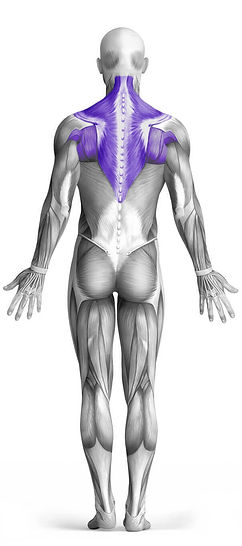Lever Reverse Grip Vertical Row 101 Video Tutorial
0

Exercise Synopsis
Target Muscle Group
Upper Back
Secondary Targets
Execution
Compound
Force Type
Pull
Required Equipment
Leverage Machine
Fitness Level
Advanced
Variations
Alternatives
None
Timer
Hour
Minute
Second
Stopwatch
00:00:00:00
Overview
The Lever Reverse Grip Vertical Row is an effective exercise primarily targeting the upper back, with secondary emphasis on the biceps. Performed using a leverage machine, this compound movement involves pulling the handles towards your torso with a reverse (supine) grip, which activates the lats, traps, and rhomboids. As a pulling motion, it also engages the biceps, helping to strengthen and develop arm muscles. The machine provides stability and control, allowing for a focused and controlled movement, making this exercise an excellent choice for enhancing upper body strength and improving posture.
How to Perform
Adjust the lever machine to a suitable height based on your body’s reach and comfort.
Position yourself in front of the machine, standing with your feet shoulder-width apart and knees slightly bent for stability.
Take hold of the handles using an underhand grip, with your palms facing upward.
Maintain an upright posture, activating your core to support your spine.
Begin the movement by pulling the handles toward your torso, keeping your elbows tight to your sides.
At the peak of the movement, squeeze your shoulder blades together, focusing on the contraction in your upper back.
Pause briefly at the top, ensuring full engagement of the targeted muscles.
Slowly reverse the motion, returning to the starting position in a controlled manner.
Repeat the exercise for the desired number of reps, focusing on maintaining proper form throughout each repetition.
★ Bonus: For exercises that involve external weights (such as dumbbells, barbells, or machines), the One Rep Max (1RM) calculator can help you estimate your maximum lifting capacity. Use it to track your strength progress and adjust your training for optimal results.
Tips
Select a weight that is challenging yet manageable, ensuring you can maintain proper form throughout the movement.
Activate your core by keeping your abdominal muscles engaged during the entire exercise.
Focus on pulling your shoulder blades down and together to effectively target your upper back muscles.
Perform the movement in a smooth, controlled manner, avoiding any jerking or sudden movements.
Keep your spine neutral by aligning your head with your back, avoiding any unnecessary bending forward or backward.
Exhale while pulling the handles toward you, and inhale as you return to the starting position.
To increase the difficulty, you can either add more weight or slow down the tempo of the movement.
For variety, experiment with different grip widths, such as narrow or wide, to engage different areas of your back.
Pay attention to your body’s feedback, and adjust the weight or range of motion to prevent discomfort or strain.
Always ensure you warm up before beginning your workout and take time to stretch afterward to support muscle recovery and flexibility.
How Not to Perform
Avoid Using Momentum: Do not swing or jerk your body to move the weight. Focus on a smooth, controlled movement to avoid wasting energy and ensure that the upper back muscles are properly engaged.
Don’t Let Your Elbows Flare Out: Keep your elbows close to your body throughout the movement. Allowing them to flare out will shift the emphasis away from the upper back and reduce the effectiveness of the exercise.
Don’t Overextend Your Arms: Avoid fully extending your arms at the starting position. Keeping a slight bend in your elbows helps to keep constant tension on the targeted muscles and prevent strain.
Don’t Arch Your Back: Ensure your spine stays neutral by avoiding excessive arching of the lower back. Overarching can lead to lower back strain and improper muscle activation.
Avoid Shrugging Your Shoulders: Keep your shoulders down and away from your ears. Shrugging them up can shift the focus to your traps instead of the targeted upper back muscles.
Don’t Rush the Movement: Performing the exercise too quickly can lead to improper form. Focus on a steady, deliberate pace to ensure proper muscle engagement and minimize injury risk.
Don’t Overload the Weight: Using too heavy a weight can compromise your form, especially if you need to use momentum or strain to complete the movement. Start with a manageable weight and gradually increase as your strength improves.
Avoid Leaning Forward: Keep your torso upright and avoid leaning forward during the pull. Leaning can reduce the focus on your upper back and increase the risk of lower back strain.
Don’t Hold Your Breath: Always remember to breathe steadily. Exhale as you pull the weight in and inhale as you return to the starting position to ensure proper oxygen flow and prevent unnecessary tension.
Avoid Overreaching at the End: Don’t try to pull the handles too far back. The range of motion should stop once your elbows are fully bent, as trying to go further may put unnecessary strain on your shoulder joints.
Variations
Variations of fitness exercises refer to different ways of performing a specific exercise or movement to target various muscle groups, intensities, or goals. These variations aim to challenge the body differently, prevent plateaus, and cater to individuals with varying fitness levels.
Alternatives
Alternative exercises in fitness refer to different movements or activities that target similar muscle groups or serve the same training purpose as the primary exercise. These alternative exercises can be used as substitutes when the original exercise is unavailable or challenging to perform due to various reasons such as equipment limitations, injuries, or personal preferences.



